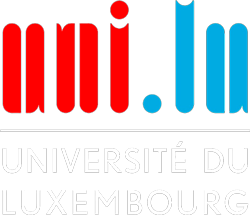Digital Urban Development - How large digital corporations shape the field of urban governance (DIGI-GOV)
New technologies can revolutionize how cities are organized and function. Digital services, prediction models, facial recognition technologies, artificial intelligence, machine learning, big data, new technologies have a growing role is urban life. This digital turn has increased the role of large digital corporations (LDCs) in urban development.
The range of services and innovation offered by LDCs is increasing in both volume and centrality, as more and more institutions, public and private, rely on these for essential digital infrastructures. This trend impacts not only the palate of technologies that the future digital city might provide, it also challenges both urban governance and socio-political and intuitional patterns that characterize contemporary urbanity. The involvement of LDCs in urban planning is not without risks and the ramifications can be severe. There is thus an urgent need to understand how these processes progress, the trajectories of urbanization that LDCs are steering, and the associated risks for urban society, especially in regards to protecting both open markets and democratic processes of participation and critical debate.
Exposing relational urban geographies of digital development
Housed at the Department of Geography and Spatial Planning, University of Luxembourg, the DIGI-GOV research team aims to understand (a) the role of large digital corporations (LDCs) in digital urban development, (b) how the presence of LDCs in urban planning practice challenge pre-existing modes urban governance, and (c) how LDC-led urban development constitutes a new relational geography of digital cities.
DIGI-GOV expands on prior research that examined Alphabet Inc.’s digital city project in Toronto that raised a number of important issues for urban planners, development practitioners and urban studies scholars. It will also shed light on four further cities in addition to Toronto, which have been challenged by the presence of LDCs—namely, Seattle, Arlington, Bissen, and Eemshaven. Seattle has been impacted by Amazon’s first headquarter. In Arlington, the implications of a second HQ loom. Eemshaven, where a Google data centre operates and Bissen, where a Google data centre is planned.
Arlington, and Seattle are ongoing cases of LDC-led digital city development, and all three have comparable urban contexts, as large cites under growth pressure where local governments play a central role in urban planning. Eemshaven and Bissen are examples of the hidden side (second text) of LDC-led digital urban development. They are smaller municipalities on the countryside that either house, or will house, the data centres required to keep LDC’s operating.
The selected cities are hus some of the few exemplary cases available where LDCs have secured their position in the local urban field. Through qualitative methodological approaches, DIGI-GOV will tease out how these cities are relationally connected through LDC-led urban development, and what scholars and practitioners can learn from these experiences. Examined together, one can scratch at the surface of, and unearth, this new emerging relational geography.
DIGI-GOV is a 3-year project funded by the Luxembourg National Research Fund (FNR/C20/SC/14691212)
